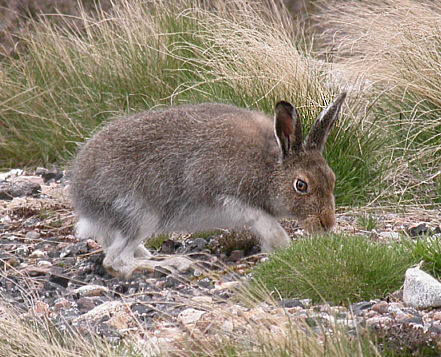Facts About Eurasian Arctic (White, Mountain) Hare
The mountain hare, also known as the blue hare, tundra hare, or Irish hare, is a captivating species that thrives in the polar and mountainous regions of the Palearctic. These hares can be found from Fennoscandia to eastern Siberia, with smaller populations inhabiting the Alps, Scotland, Poland, and Hokkaidō. The Irish mountain hare, a distinct subspecies, is particularly notable for its unique coat color and specific habitat preferences.
Mountain hares can grow up to 65 cm in length and possess a fascinating adaptation for winter—they change their coat to white, allowing them to blend seamlessly into snowy landscapes. Their diet varies based on their location, but grasses often constitute a significant portion of their food intake. In certain areas, they face intense competition from the European hare, particularly where their habitats overlap.
Human activities have a considerable impact on mountain hares. For instance, winter tourism in the European Alps can cause significant stress to these animals. In Scotland, hares are sometimes culled for various reasons, including efforts to prevent diseases in red grouse populations.
Conversely, there are active conservation efforts aimed at protecting these creatures. In Scotland, public advocacy and environmental groups have successfully campaigned for measures such as the ban on unlicensed culling and the designation of mountain hares as a protected species. This demonstrates that with collective support and action, we can make a meaningful difference in preserving these remarkable animals.

 Russia
Russia